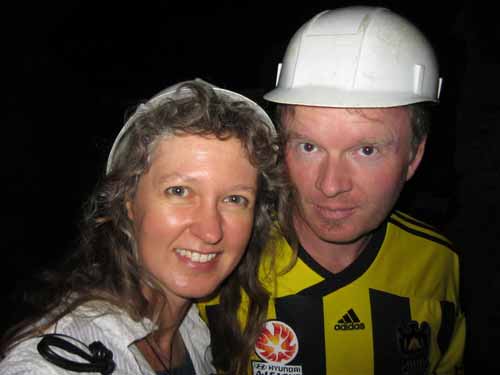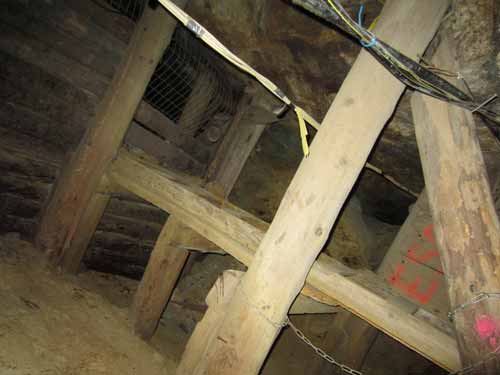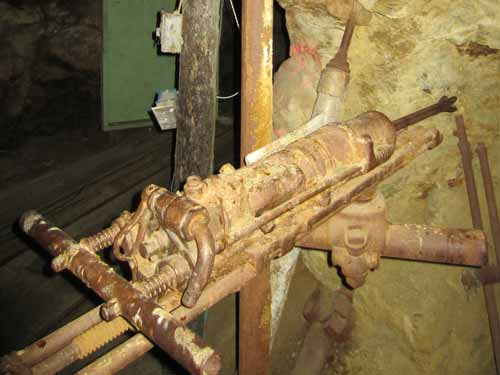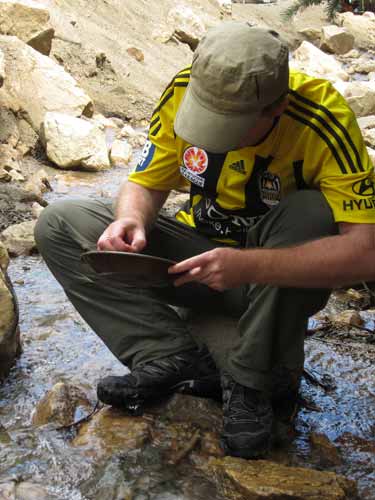We made the drive up the long dirt road to the mine, located just outside Idaho Springs. There were many people and a tour had just started. We threw on hard hats (which were waaaaay too big) and were hurried into the mine to catch up with the rest of the large group. There were many small, uncontrolled kids having tantrums and unfortunately it was often difficult to hear the guide talk over their yelling.

Some old mining buildings along the way

The Phoenix mine is operated by the oldest continuous gold mining family in Colorado. It is a 'hard rock' mine. This means the rock comes off in slabs so it's a bit safer with regards to cave ins. There are two main veins. Originally, the Phoenix vein was mined in the 1940's, then the Resurrection vein was discovered and mined in the 1980's. It was considered to be a very rich vein, by mining standards, providing over 2 ounces of gold per ton. There is still a lot of gold in the mountain but it's not worth extracting. There are too many licenses and approvals needed, not to mention disposal fees and transportation costs of having to smelt it across state lines. So now it's just a tourist destination, although other mines in the area are still working.


The Phoenix vein mine shaft continued for 5 miles. The temperature gets a lot colder in these higher mines during winter. It wasn't too bad now.

The hard hat wouldn't stay on to save my life (irronincally).


The old hammer and chisel method. One man would hit and another would hold and turn the chisel a quarter turn each time. They took turn at the two jobs.

The Widowmaker replaced 10 men on the hammer and chisel... of course they didn't live very long in the beginning because of the lethal dust that was kicked up, slowly slicing their lungs to shreds.

Touching the lucky bucket!

A gold vein

Equipment in the processing room

The jaw-breaker crushed rocks.
Outside, one could buy food to feed the local ground squirrels... who were quite bold and demanding... and fat!


The weather was clearly moving in, but we decided to do some quick gold panning anyway. After a short demonstration, we walked over to the creek with out pans. There wasn't a lot of water but the sand sparkled. The goal was to scoop up a bunch of sand, then slowly swish it about in the water, letting the current wash away the lighter material. In the end, you should be left only with magnetic black iron. If there is any gold, it will be in that.

A potential storm

Working hard

No luck yet!

Sparkly sand

I got lots of sparkly things but they were apparently just different colored pieces of mica. As a consolation prize, I was given some small pieces of gold ore and gold pyrite.

(From left to right) gold ore, gold pyrite, and a flake of gold-colored mica
By this time, the lightning and thunder had started, so we headed down into town.

A loud but dry storm

Ooooh... more gold in the creek!

